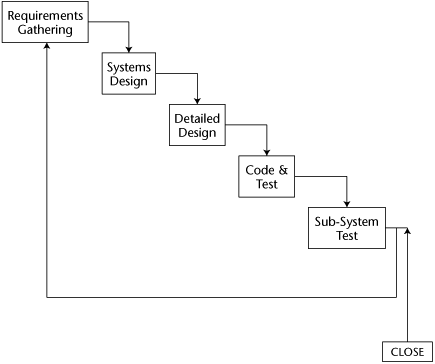Iterative SDPM Strategy for the Closing Phase of the Rational Unified Process Model
Figure 22-4 illustrates the Closing Phase of the SDPM strategy for the Rational Unified Process model.
Figure 22-4. The Closing Phase of the SDPM strategy for the Rational Unified Process model

The Rational Unified Process model is a very popular Iterative approach. Its success in the organization depends heavily upon the documentation legacy that has been created from past projects that followed the RUP approach. That legacy commonly includes libraries of reusable code, but it can also contain libraries of reusable Work Breakdown Structures (WBSs) and use cases. Therefore the Closing Phase of the Iterative SDPM strategy for the Rational Unified Process model consists of assuring the appropriate documentation has been added to the reusable libraries. This is no small task. Just wanting to build a reusable library doesn’t mean it will happen. Special training is needed to translate project-specific artifacts to reusable library artifacts. That makes the Rational Unified Process model documentation-heavy if the organization intends to realize a return on its investment.
One could successfully argue that a Rational Unified Process project never ends. Technically speaking, they would be correct because implementation is followed by transition to a continuous improvement project. In fact, a Rational ...
Get Effective Software Project Management now with the O’Reilly learning platform.
O’Reilly members experience books, live events, courses curated by job role, and more from O’Reilly and nearly 200 top publishers.

